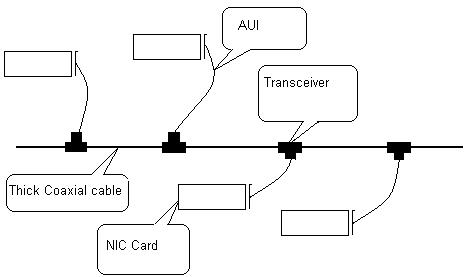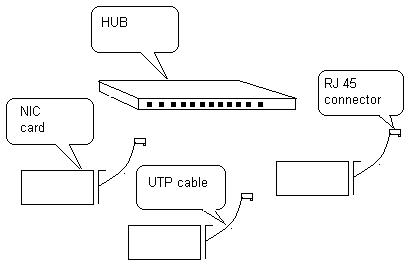Ethernet IEEE 802.3
Ethernet protocol is by far the most widely used. Ethernet protocol allows for linear bus, star, or tree topologies. Data can be transmitted over wireless access points, twisted pair, coaxial, or fiber optic cable at a speed of 10 Mbps up to 1000 Mbps.Fast Ethernet
To allow for an increased speed of transmission, the Ethernet protocol has developed a new standard that supports 100 Mbps. This is commonly called Fast Ethernet. Fast Ethernet requires the use of different, more expensive network concentrators/hubs and network interface cards. In addition, category 5 twisted pair or fiber optic cable is necessary. Fast Ethernet is becoming common in schools that have been recently wired.
Ethernet LAN is developed by Xerox and Intel Corporation. It supports 10 Mbps speed and the enhanced versions of Ethernet LAN which can support up to 100 Mbps and 1000 Mbps are called Fast Ethernet and Gigabit Ethernet respectively.
Ethernet uses an access method called CSMA/CD (Carrier Sense Multiple Access/Collision Detection). This is a system where each computer listens to the cable before sending anything through the network. If the network is clear, the computer will transmit. If some other node is already transmitting on the cable, the computer will wait and try again when the line is clear. Sometimes, two computers attempt to transmit at the same instant. When this happens a collision occurs. Each computer then backs off and waits a random amount of time before attempting to retransmit. With this access method, it is normal to have collisions. However, the delay caused by collisions and retransmitting is very small and does not normally effect the speed of transmission on the network.
CSMA/CD protocol
In CSMA/CD the station wishing to transmit first listens to certain the line is free, and then transmits its data, and then listens again. During the data transmission, the station checks the line for the extremely high voltage that indicates a collision. If a collision is detected, the station quits the current transmission and waits a predetermined amount of time for the line to clear, then sends its data again.
There are further three LAN standards in Ethernet and these are:
- 10BASE5: Thick Ethernet;
- 10BASE2: Thin Ethernet;
- 10BASE-T: Twisted Pair Ethernet.

10BASE5 (Thick Ethernet)
- Speed is 10 Mbps;
- Use baseband signals;
- Each segment is of 500 meters;
- Each segment have maximum 200 stations;
- Use Bus topology;
- Use thick coaxial cable;
- Every node have NIC card;
- Transceiver is used to attach the node to the cable;
- Transceiver performs the CSMA/CD function;
- Each station is linked to its corresponding transceiver by an attachment unit interface (AUI), also called a transceiver cable;
- Not easy to install.

10BASE2 (Thick Ethernet)
- Speed is 10 Mbps;
- Use baseband signals;
- Each segment is of 200 meters;
- Each segment have maximum 50 stations;
- Use Bus topology;
- Use thin coaxial cable;
- Every node have NIC card which also performs CSMA/CD protocol function;
- BNC-T connectors are used to attach the node to the cable;
- No AUI cable;
- Easy to install.

10 BASE-T (Thin Ethernet)
- Speed is 10 Mbps;
- Use baseband signals;
- Use UTP (Unshielded Twisted Pair) cable;
- Use star topology;
- Every node is connected to the Hub with UTP cable having RJ-45 connector;
- Every node have NIC card;
- Easy to install and uninstall;
- Very famous standard of Ethernet.
Comments: